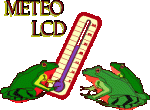The research center CRPGL (Centre de Recherche Public Gabriel Lippmann) organizes the 12th Nov. 2008 a conference on indoor and outdoor air pollution. I will present a poster covering 10 years ground ozone measurements done at meteoLCD. All trends are negative, there are some interesting correlations with other parameters. I will post a pdf version after the conference on the meteoLCD site in the “Papers” chapter.
Just a preliminary remark: It seems that biogenic (natural occuring) VOC’s (like isoprenes and terpenes emitted from trees) are largely understated, and may play a major (if not a dominant) role in hot summer ozone peaks at rural stations like Diekirch.
The Royal Society just published a big report “Ground-level ozone in the 21st century: future trends, impacts and policy implications”. Regardless the bettering at many European locations, the overall tone is alarmist (like: the heat wave 2003 shows what will become the rule…). As Richard Lindzen always says: Alarm seems to be mandatory to get attention and funding.



